The forearm is a crucial body part that we constantly use in our daily lives. But it’s arguably even more important for weight lifters who depend on strong lower arms for virtually every upper body exercise.
That’s why experts highly recommend including dumbbell wrist curls in your forearm workouts. While most lifters do this drill at the gym, with a flat surface like a table or desk and a dumbbell, you can actually do forearm curls anywhere.
In this guide, you’ll learn how to do forearm curls for the best results, as well as the mistakes that you must avoid if you want to gain lower arm strength and size while staying injury-free.
Related post: forearm exercises without weights
How to do wrist curls properly
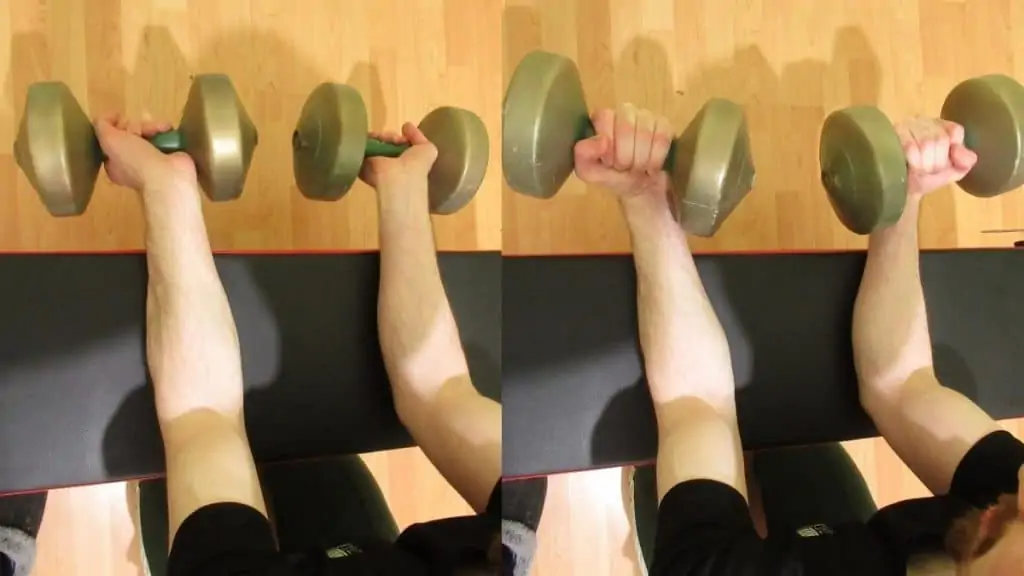
Here, you’ll learn how to do wrist curls with dumbbells. Note, however, that the form is also the same for the barbell wrist curl. The equipment is the only difference.
- Grab 2 dumbbells and then kneel at the side of a weight bench.
- Rest the tops of your forearms on the bench padding (or on your thighs) and let your hands hang off the edge.
- Lower the weights towards the floor under control until you feel a nice forearm stretch.
- Immediately bring the weights back up by flexing your wrists and then contracting your forearms forcefully at the top of the rep.
- Repeat for 3-4 sets of 10-15 reps.
Regular dumbbell forearm curls work the flexors of the forearm, so don’t forget to do reverse wrist curls for your extensors to achieve balanced muscle development.
Wrist curls muscles worked
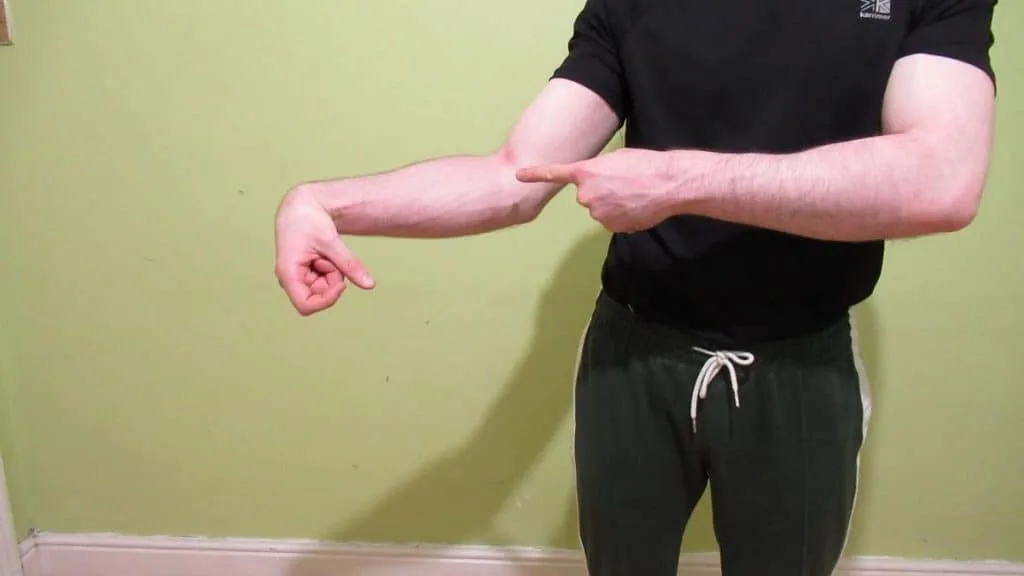
The wrist curl exercise works the muscles that are known as the forearm flexors, which are the flexor carpi radialis, the flexor carpi ulnaris, the flexor digitorum superficialis, the pronator teres, and the palmaris longus. [1] Collectively, these 5 muscles comprise the superficial layer of the anterior (underside) of the forearm.
Wrist curl mistakes
DB wrist curls are simple enough. However, many lifters seem to forget that this drill is an isolation exercise. So for the best results and the greatest injury protection, make sure that you avoid these common wrist curl mistakes.
Using excessive momentum
While training intensity and progressive overload are critical components of any strength training program, muscles, being simple pieces of meat, respond only to tension.
As such, you need to control the weight during every part of the repetition if you want to build lean muscle and develop strength.
This isn’t to say that you need to perform slow negatives. But you shouldn’t just let the dumbbells drop. Instead, lower the weights by letting your forearms stretch and then lift them back up with a strong contraction.
Related exercises: plate wrist curl │EZ bar wrist curl
Performing partial reps
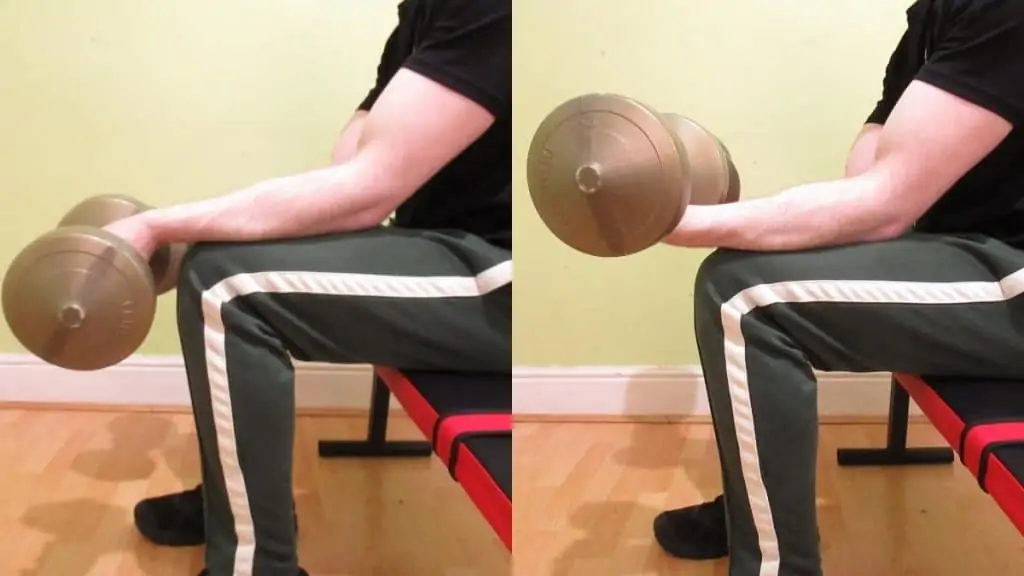
The forearm wrist curl has a tiny range of motion (ROM) by default. Arbitrarily shortening this lifting motion is a terrible idea for 2 reasons.
First of all, performing partial reps recruits fewer muscle fibers and thus leads to worse physique and strength development than full reps. [2]
Second, partial reps enable you to lift heavier weights. But since these weights are heavier than your forearm muscles can handle by themselves (otherwise, you’d do full reps), you’re increasing your injury risk by stressing your connective tissue.
Overstretching your muscles
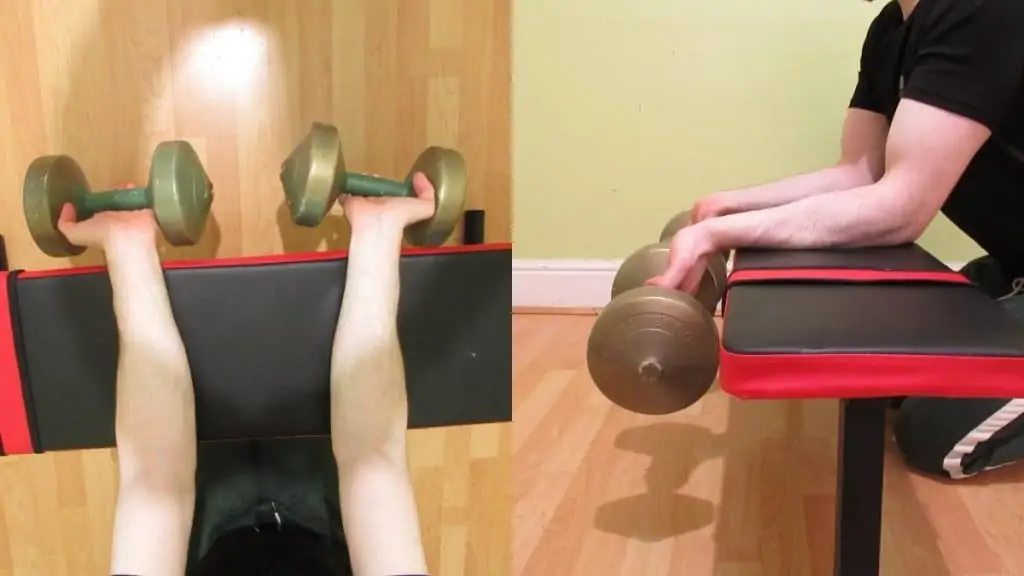
Don’t confuse a full ROM with an excessive ROM. One will get you results; the other will get you hurt.
Bringing the weights down too far can strain your wrists. So only lower the dumbbells until you feel a comfortable stretch.
This also applies to other wrist curl exercises, but it’s especially relevant for seated wrist curls or drills where you use a bench because these movements typically have a greater potential ROM than the likes of the standing wrist curl.
Wrist curl benefits
Forearm wrist curls are a popular exercise among bodybuilders seeking to build a complete physique. However, anyone who wants stronger and more functional lower arms can benefit from adding the dumbbell forearm curl to their workout routine as well.
Read more: forearm exercises for women │resistance band forearm exercises
Fantastic forearms
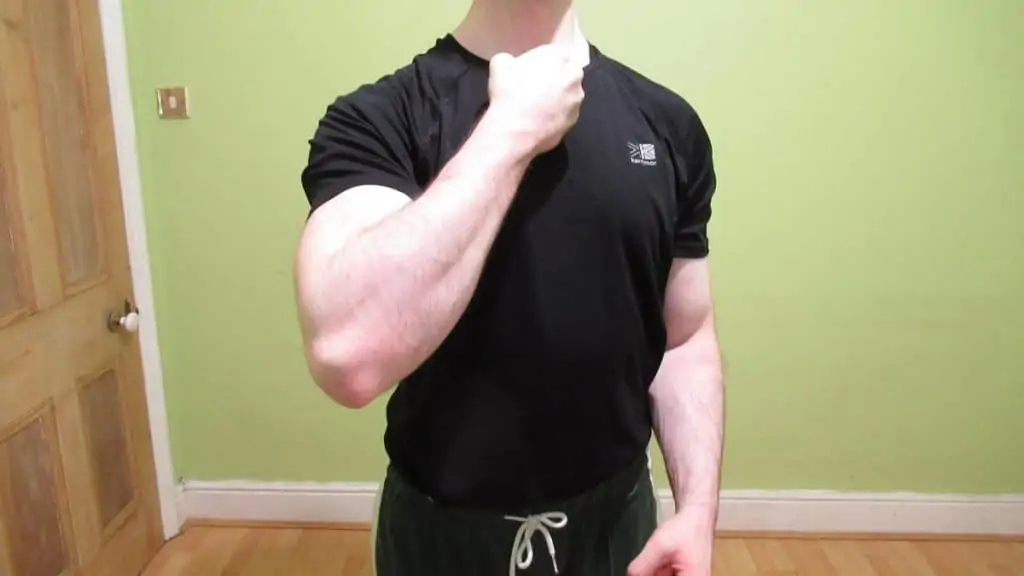
While some trainees can achieve outstanding forearm development from compound movements like pull-ups and deadlifts, most lifters still need to perform isolation exercises to get the forearm development that they desire.
And since the forearm wrist curl is one of the most straightforward lower arm exercises, it’s naturally an excellent choice for many people. Plus, since you typically perform it with free weights, it lends itself excellently to progressive overload, which in turn gives it great mass–building potential.
Stronger wrists
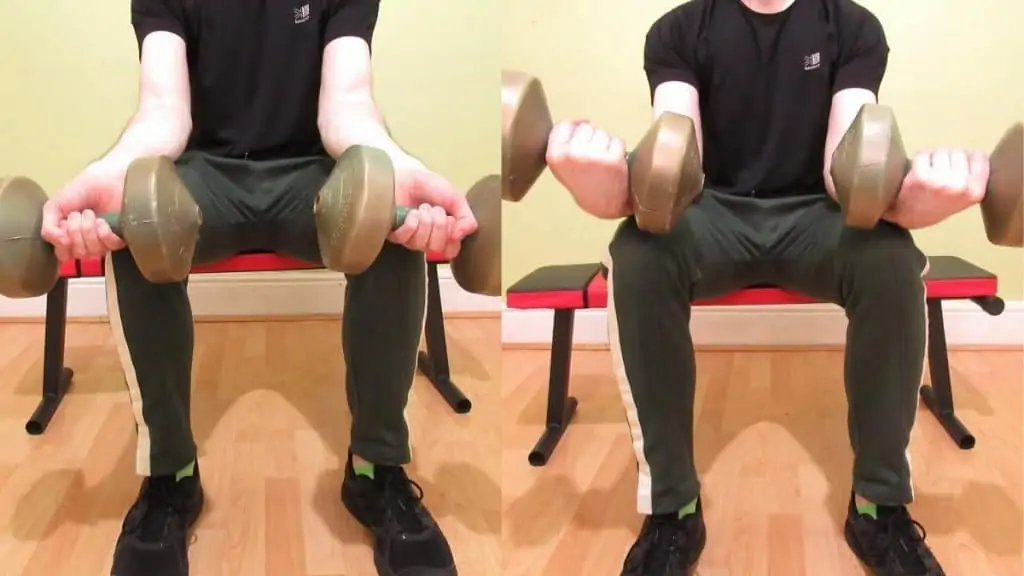
Although using poor form can certainly injure your wrists, performing dumbbell forearm curls with good technique can actually strengthen them by getting the surrounding muscles and connective tissue used to handling tension.
Of course, the more tension that a muscle is accustomed to handling on a regular basis, the more injury resistant it naturally becomes. Like a good spotter, this injury resistance helps you to stay safe in the gym.
Great grip strength
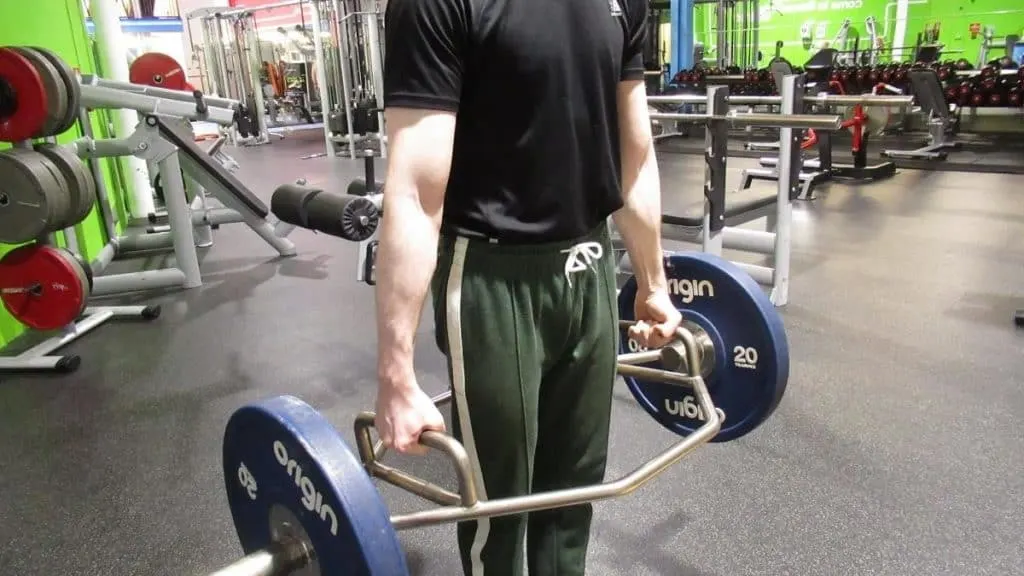
The wrist curl exercise leads to bigger and stronger forearms, which in turn results in greater grip strength. You can even measure it yourself with a dynamometer to see the correlation. [3]
This benefit naturally carries over to your compound pulling lifts, where you’ll find gripping the bar to be an easier task now that your lower arms are more powerful and don’t fatigue as quickly.
Dumbbell wrist curl FAQ
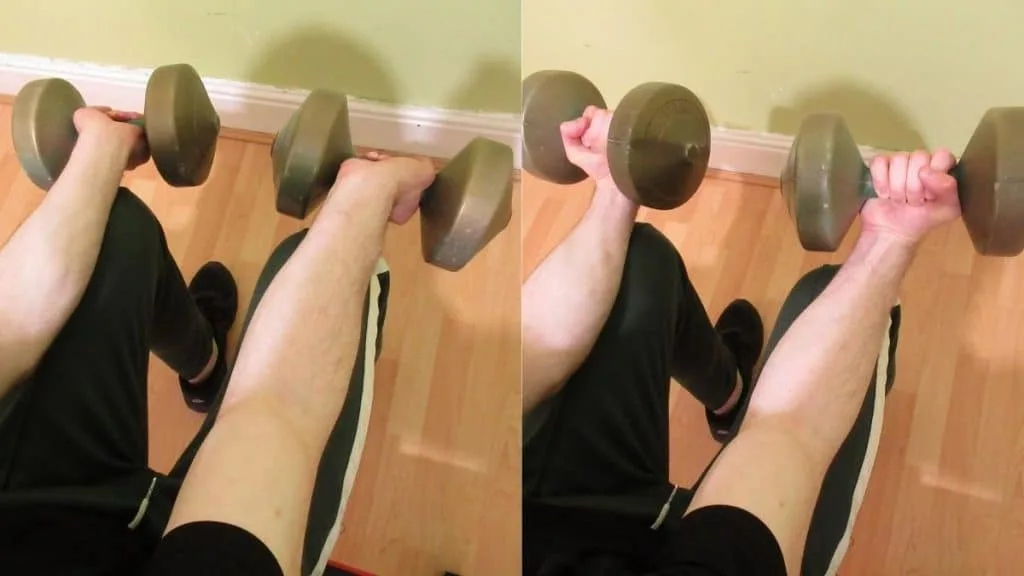
Learn all about the finer points of palms down dumbbell wrist curls in this FAQ.
What are wrist curls?
Dumbbell wrist curls are a forearm isolation exercise that strength trainees perform with free weights so that they can attain greater size and strength in their lower arms.
How many wrist curls should I do?
Perform 2-4 sets of 10-15 reps of the seated wrist curl per workout. Do fewer sets if you’re a beginner and more sets if you’re advanced.
Are dumbbell wrist curls good for building mass?
Yes, if you use the proper form and then apply the principle of progressive overload by slowly increasing the weight, then this particular forearm curl is an excellent mass builder.
Just make sure to do a seated or standing reverse wrist curl to work your extensors too.
Are wrist curls good for carpal tunnel?
If you suspect that you have carpal tunnel syndrome, you should first rest your limb and talk to your doctor. They may refer you to a physiotherapist, who might then suggest forearm curls as part of a rehabilitation plan.
What are the benefits of doing a two hand wrist curl?
Unlike the single dumbbell wrist curl, the two hand wrist curl enables you to save time by training both arms simultaneously.
What’s a good wrist curl workout?
Here are some good wrist curl exercises that you can do as part of a workout. Also, see our dumbbell forearm exercises if you want more free weight training ideas.
1: Dumbbell wrist curl — 3 x 10-12 reps
2: Barbell reverse wrist curl — 3 x 15-20 reps
3: Behind the back wrist curl or cable wrist curl— 3 x 8-12 reps
4: Wrist roller or forearm twist — 2 sets (leave 1 rep in reserve per set)
The verdict on forearm curls: How effective are they?
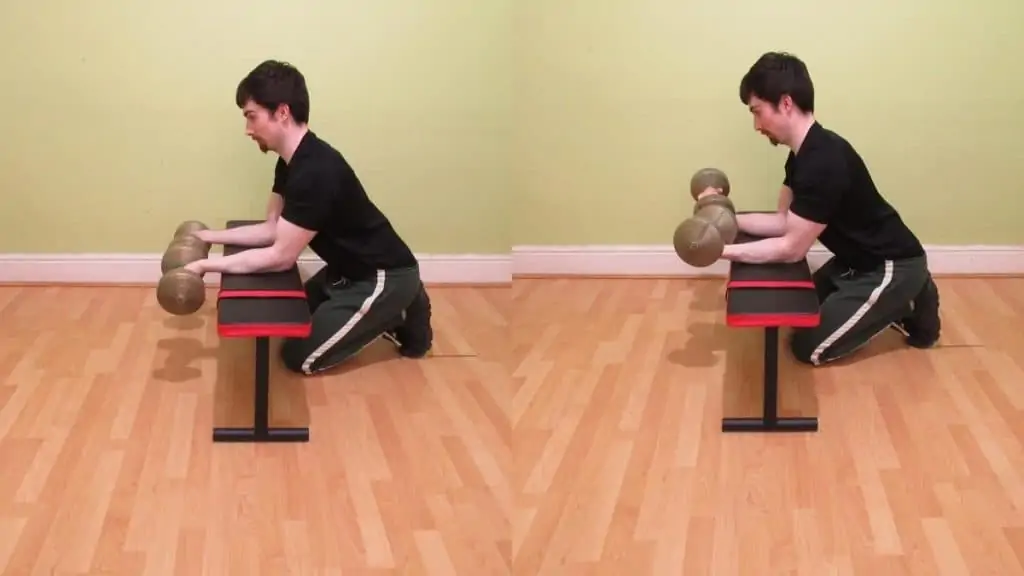
Prone wrist curls of all kinds are a useful isolation exercise for building lean muscle and developing strength in your lower arms. The key is to always use the proper form so that you stay injury-free and get the most out of each set and workout.
The dumbbell wrist curl, in particular, is a great exercise. By working both forearms independently, it enables you to achieve balanced lower arm muscles.
Performing forearm curls will also boost your compound lift strength by giving you a stronger grip that’s less likely to fatigue prematurely.
References
- Kinesiology Corner: Wrist Curls. (1981, August). The Strength & Conditioning Journal. https://journals.lww.com/nsca-scj/Citation/1981/10000/Kinesiology_Corner__Wrist_Curls.13.aspx
- Schoenfeld, B. J., & Grgic, J. (2020). Effects of range of motion on muscle development during resistance training interventions: A systematic review. SAGE Open Medicine, 8, 205031212090155. https://doi.org/10.1177/2050312120901559
- Mogk, J. P. M., & Keir, P. J. (2006). Prediction of forearm muscle activity during gripping. Ergonomics, 49(11), 1121–1130. https://doi.org/10.1080/00140130600777433

